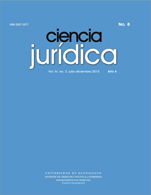Abstract
It has often been said that judges do not represent the people and thus their decisions are countermajoritarian or anti-democratic. Found as based on the fact that they are not democratically elected, but by a complex technical procedure constitutional, and therefore could be considered as its judgments are not democratic. In mitigation could be considered the fact that while people do not inter-comes in judicial decisions in the process of appointing a judge involved their representatives, as it has sustained the Court of Justice of Argentina in the “Rizzo” where I set the pattern where judges are elected indirectly by the people. In the American doctrine there are three main proposals to resolve the majority difficulty, and one to dissolve. Within the first Ro-land is Dworkin called foundationalist of law, the second proposal, developed by John Hart Ely, is the “interpretivist. The third and last is what Stephen Holmes called social choice, which is based on the “precommitment strategy.” Instead, there is only one position to dissolve that is Bruce Ackerman, democratic theory based on a dualistic distinction between “normal politics” and “constitutional politics”. Finally, we have developed our position approaching the last stance, where no justification necessary nor democratic legitimacy of judges or their decisions, because in reality the judges have the democratic function their execution to include the insular minorities.The authors retain the copyright and must provide in writing the authorization for the first publication, via a computer network and printed to Juridical Science. Third parties are allowed to use the published information provided that the authorship of the work and the first publication in this journal are respected and made public.
The works published in this magazine are under a License CreativeCommons Attribution-Non-Commercial-ShareIgual 4.0 International.

